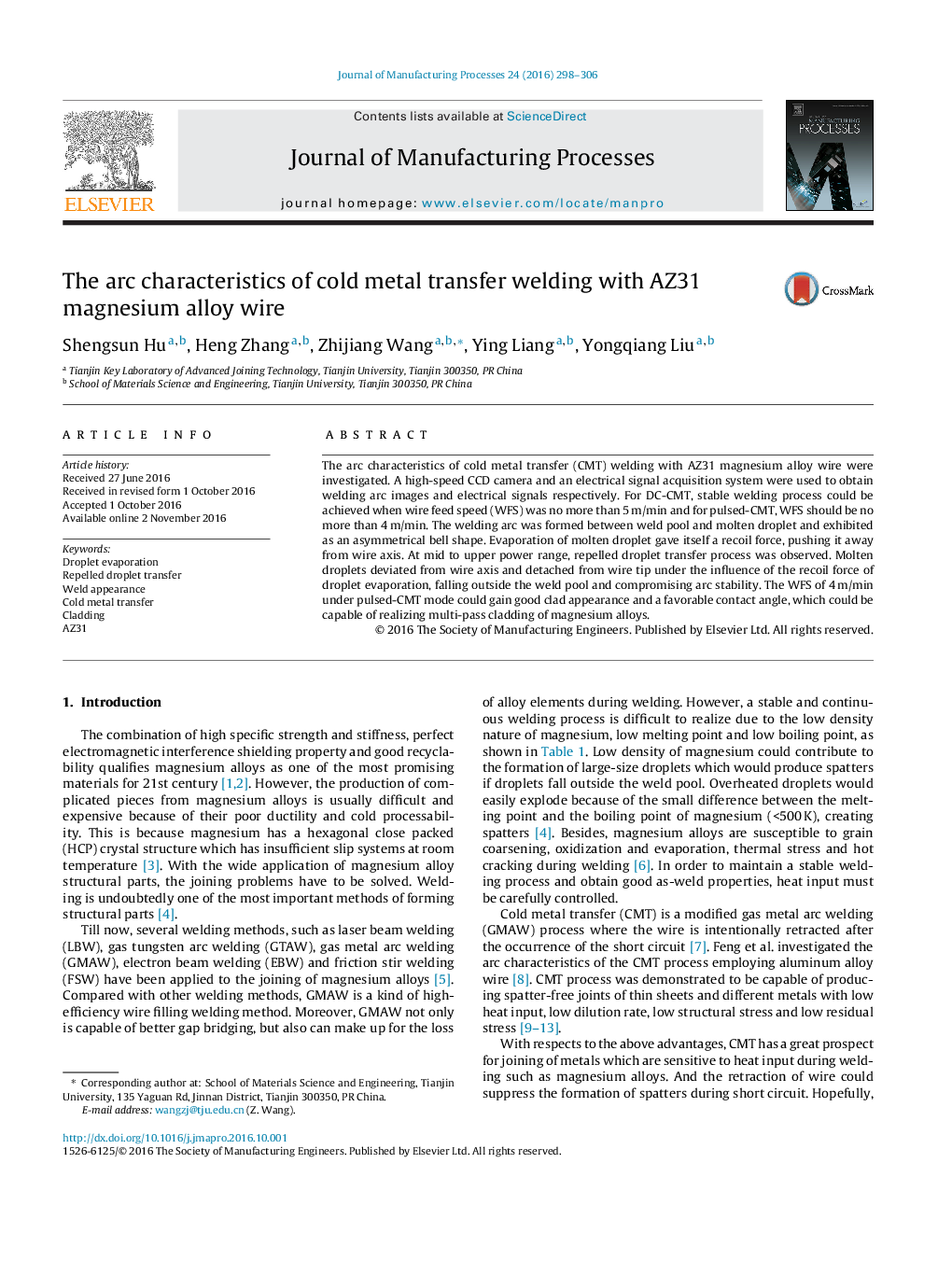| Article ID | Journal | Published Year | Pages | File Type |
|---|---|---|---|---|
| 6481521 | Journal of Manufacturing Processes | 2016 | 9 Pages |
The arc characteristics of cold metal transfer (CMT) welding with AZ31 magnesium alloy wire were investigated. A high-speed CCD camera and an electrical signal acquisition system were used to obtain welding arc images and electrical signals respectively. For DC-CMT, stable welding process could be achieved when wire feed speed (WFS) was no more than 5Â m/min and for pulsed-CMT, WFS should be no more than 4Â m/min. The welding arc was formed between weld pool and molten droplet and exhibited as an asymmetrical bell shape. Evaporation of molten droplet gave itself a recoil force, pushing it away from wire axis. At mid to upper power range, repelled droplet transfer process was observed. Molten droplets deviated from wire axis and detached from wire tip under the influence of the recoil force of droplet evaporation, falling outside the weld pool and compromising arc stability. The WFS of 4Â m/min under pulsed-CMT mode could gain good clad appearance and a favorable contact angle, which could be capable of realizing multi-pass cladding of magnesium alloys.
